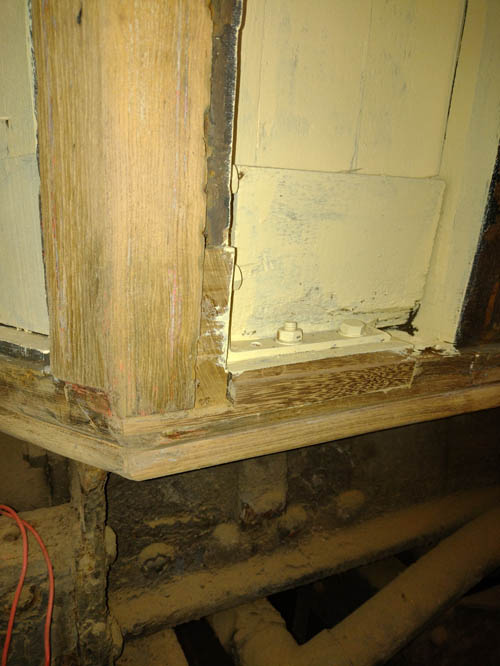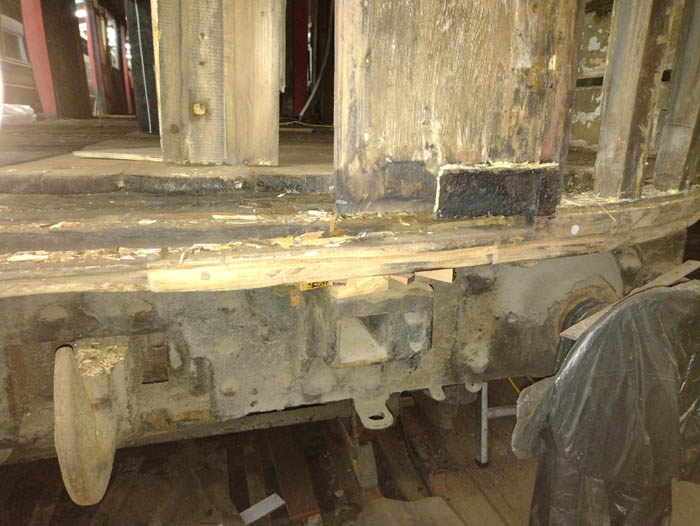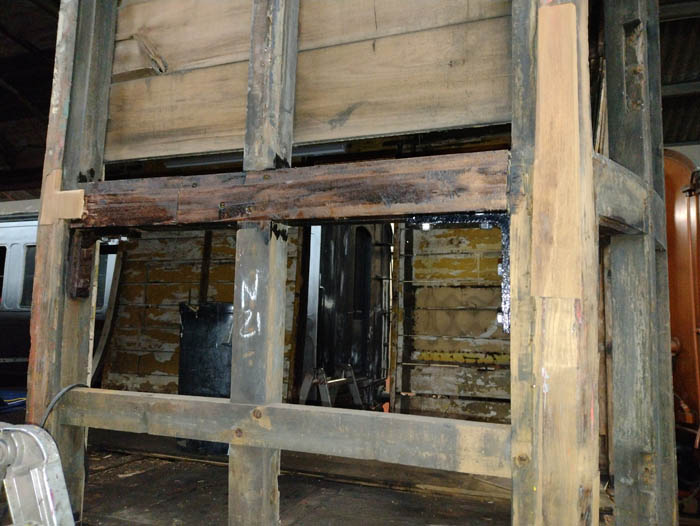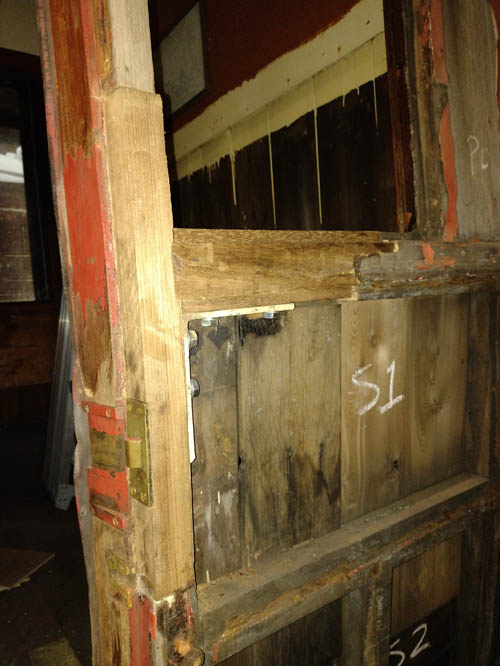

The SE corner solabar level damage had to be repaired. The old rotten and split teak was carved out first. The splits in the "good" wood caused by rusting bolts was glued together then two long screws were set into the outer wood as a "belt and braces" fixing to prevent future splitting. A very strangely shaped piece of teak was then cut to fit the hole created by the removal of rotten wood and this was glued into place. Any gaps left were filled with John's Magic Filler made from liquid PVA and teak sawdust. The red coloured piece of plywood jammed against the buffer was used to force the wood spplits together whilst glueing.

At the north east corner, where the corner pillar had sprung about 1/4" londitudinally the knee iron was removed and sash cramps used to ease the corner pillar back to where it ought to be. After removing the rotted wood from the solebar, a new piece of teak was glued in place in order that the knee iron, when re-fitted, would have a solid base.

Along at the other (west) end of the carriage damage was more dramatic. It looked like
something very heavy (possibly a ton or more) had been dropped on the edge of the teak base forming the floor at the
gangway opening. The edge of wood had been bent down by about 1" and this in turn had pulled the tenons of
the vertical framing on both sides out of their mortices by up to 1/3".
Sash cramps were used to try to straighten out the floor wood after cutting away the vertical boarding on the
inner side of the end wall byt a few inches above the floor level. After pulling the floor up to meet the framing
the cramps were removed one side at a time so that copious amounts of glue could be persuaded into the tenon mortices.
The cramps were then tensioned up again to close the joints and then were left in place for several days to allow the
glue to fully cure.

Round the corner from the west end damage there was also damage on the north side. The waist rail
had rotted at both ends where the knee irons were "attached". Swelling rusty bolts had split the wood so there was no
other option than to replace the section between the NW corner post and the guard's door (door #10).
As the waist rail was tenoned into the vertical frames at both ends the replacement had to be made in two parts with a
hefty lap joint near the middle. The end result was satisfactory and certainly a lot stronger than the original.
Further repairs to the north side framing were required - the rail between the solebar and the waist rail was not
in good shape between doors 15 and 16 so had to be partially replaced.

After removing all of the exterior doors to lighten the wooden part (for lifting), the doors were scraped and sanded back to the original teak. On three of the compartment doors, the garnish rail, after removal of seriously darkened varnish, displayed the text "THIRD" and "16122". 16122 was the number of this vehicle after the 1946 renumbering.

The door jam at door #1 on the south side was very badly wasted around the lock area so all the rotten wood was cut out and replaced with fresh. This was a complex shape aas it had to overlap the window opening, the secondary door lock catch and still line up with the framing above and below.